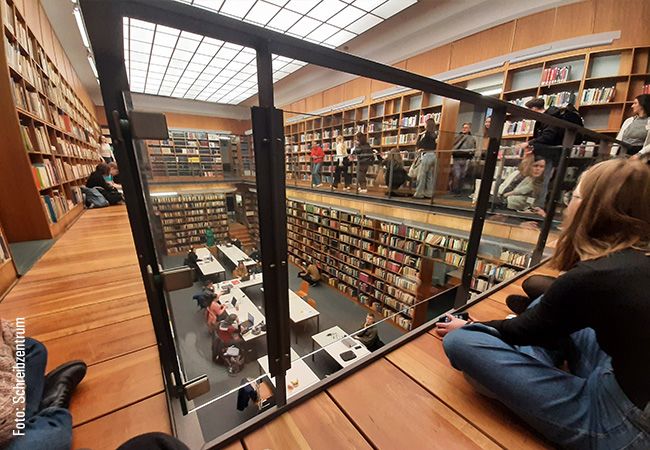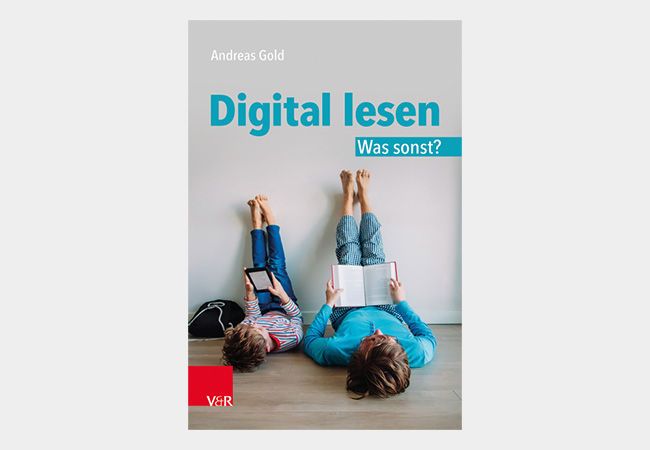The Heraeus Foundation Visiting Professorship at Goethe University

Since 2015 Goethe University has been awarding the title Heraeus Visiting Professor to scientists of international renown in physics and related interdisciplinary fields. The chair is endowed with funds set aside in 1963 by the Wilhelm and Else Heraeus Foundation to support scientific research and education in the natural sciences. The prize pays tribute to the entire works of a scientist, whose fundamental discoveries, findings or new theories left a lasting mark on their own discipline and who are expected to continue their outstanding achievements in the future. Scientists from Germany and other countries are eligible for the chair. The laureate is invited to conduct research and teach in cooperation with one of the faculties in Frankfurt for at least six weeks on a topic of their choice. Below we introduce two current Heraeus Visiting Professors: physicist Gunther M. Roland and geologist Philippe Yamato.
Large-scale experiments in particle physics
Comprehending spectacular scientific discoveries of the recent past by analyzing the original data is generally not an exercise that accompanies a regular lecture. However, thanks to Gunther M. Roland, Heraeus Visiting Professor in 2023, physics students at Goethe University can now do precisely that. Harald Appelshäuser, whose research group Roland is visiting this summer semester, is giving the lecture “Nuclear and particle physics 4f: the Higgs boson.” In it, he explains the physics of the “God particle”, and Roland – who was involved in its discovery – will support the students when they analyze the data published by the European Organization for Nuclear Research (CERN) and retrace the discovery process in detail.
As professor of physics at the Massachusetts Institute of Technology (Boston, U.S.), Roland belongs to the group investigating heavy ions at extremely high, i.e. relativistic, energies. He researches the properties typical of strongly interacting atomic nuclei and elementary particles. Since “relativistic” means the particles involved move almost at the speed of light, the experiments have to take place inside extremely powerful particle accelerators such as the Relativistic Heavy Ion Collider (RHIC) at the Brookhaven National Laboratory (Long Island, USA), the Large Hadron Collider (LHC) at CERN (Geneva, Switzerland) or the GSI Helmholtzzentrum (Darmstadt, Germany).
Conditions resembling those after the Big Bang
When heavy ions (typically copper, gold or lead ions) are accelerated almost to the speed of light and then collide with one another, they are subjected to such a gigantic amount of energy that it is not the “classical” elementary particles – protons and neutrons – that are left over, but their component quarks and gluons. For a fraction of a second, they exist in a new state of matter – a “quark-gluon plasma” like the one that existed a fraction of a second after the Big Bang. Roland is not only interested in the properties of the quark-gluon plasma and its behavior in certain very specific situations. He is also busy designing, setting up and conducting large-scale experiments in particle physics, including the CMS experiment at CERN and the sPHENIX experiment at the Brookhaven National Laboratory, scheduled to begin taking data in May 2023.
“Technologically speaking, there’s a relatively large area of overlap between sPHENIX and the ALICE experiment at CERN, where Harald Appelshäuser, my host at Goethe University, is involved,” Roland explains, adding: “Many procedures developed for ALICE are now being deployed for sPHENIX – something we will benefit from.” At the same time, the ALICE experiment will also benefit from the experiences made at sPHENIX when its next data collection begins in September 2023, once some key components have been replaced. “The enhanced dialog with the Appelshäuser group, made possible by the Heraeus Visiting Professorship, is not only useful for my own research,” Roland comments. “It actually benefits both teams.”
He also expects some major impetus for his research from cooperating with theoreticians in Frankfurt, prime among them physicist Hannah Elfner’s group researching heavy ions and elementary particles at FIAS. Elfner is working on an important model describing the particles into which a quark-gluon plasma develops following the collision of heavy ions; she and Roland employ sophisticated statistical methods to compare models and theories about the quark-gluon plasma with the experimental findings.
Not just Roland, not just 2023
The intensified exchange resulting from the Heraeus Visiting Professorship is not limited to Roland alone. His students and staff members will also have the opportunity to come to Germany and meet not only with Appelshäuser’s group, but also with the ALICE group at the GSI Helmholtzzentrum in Darmstadt. What’s more, the exchange will not cease at the end of 2023, but is planned to continue for several years. The initial focus will lie on generating and recording data in the various experiments, to be followed by discussions of the physical phenomena examined and shown to exist.
For Gunther Roland, the Heraeus Visiting Professorship means coming full circle – not simply because he visited Frankfurt many times each year in the past to discuss joint projects with colleagues in Harald Appelshäuser’s research group, but also because he studied at Goethe University and obtained his doctorate here in 1993. “This feels a bit like coming home to me,” he says.
Investigating how rocks are formed
French geologist Philippe Yamato’s research focuses on how the Earth acquired its present form. He is conducting it at the University of Rennes in western France from the end of 2022 to the end of 2023, and also as Heraeus Visiting Professor at Goethe University. Yamato’s interest lies in the lithosphere, the Earth’s stone shell, and the formation of rocks in the Earth’s interior many millions of years ago at a temperature of 600 degrees Celsius and a pressure of about 2.5 gigapascals (2.5 x 109 pascals) (just for comparison: at the deepest point in the ocean, the bottom of the Mariana Trench at a depth of 11,000 meters, the pressure is around 1,100 bar, equivalent to 0.11 gigapascals). Yamato is interested not only in the rocks’ formation but also in how their structure changes when they move deep into the Earth’s interior, and what happens when they finally come to the Earth’s surface again.
“The appearance of a piece of rock can change drastically,” Yamato explains: “You can imagine it like putting a baking tin filled with cake mixture into the oven.” The conditions around the cake mixture change, and its consistency and appearance along with it, he says. The same is true of a piece of rock – located, for example, in a “subduction zone” at the edge of a tectonic plate, that is pressed down deeper into the Earth’s interior, where it is subjected to higher pressure and higher temperatures. “I’m interested not only in comparing a piece of rock in the transformed state with its original form,” Yamato says. “I want to understand exactly how this transformation occurs.” In other words, he wants to know more than what the finished cake looks like: “Sticking with the analogy, what I want to do is peer through the oven door, observe how the cake rises and how its surface gradually changes into a crispy, golden-brown crust.”
Field research and simulations
Yamato is taking several routes to achieve this goal. He goes on field trips to places such as the Norwegian Caledonides and the French Alps, where he investigates the appearance and internal structure of the rocks and collects rock samples that he analyzes upon return, using either a normal light microscope or a scanning electron microscope, or with the aid of electron probe microanalysis.
Yamato also wants to use mathematical equations to describe how altered environmental conditions – pressures and temperatures in particular – affect the structure and composition of rocks. Based on the equations, he then writes simulation programs aimed at reproducing the properties and behavior of the rock samples as accurately as possible. “This shows us that we have correctly determined what happens inside the rocks,” Yamato explains.
He is appreciative of the fact that as Visiting Professor of the Wilhelm and Else Heraeus Foundation, he can make several extended visits to the research group of his host, geologist Thibault Duretz. “Here I can concentrate fully on joint research projects with Thibault Duretz, without having to hold classes or do administrative tasks. In addition, as visiting professor I have the funding to bring members of my research group here to Goethe University – a wonderful opportunity for my students and doctoral candidates to forge scientific contacts.”
Networking and seminar content
Yamato himself also wishes to build up and maintain his scientific network both in Frankfurt, including with the groups in geochemistry and seismology, and with a mineralogist from Heidelberg. He is also planning a trip to Norway this summer with members of Thibault Duretz’ research group, to map out the territory and collect rock samples, and to discuss scientific issues on location. And even though he enjoys focusing on research during his weeks at the Geocenter on Riedberg Campus, university teaching has also been a part of his visiting professorship. Together with Thibault Duretz, he held a four-day block seminar in the semester break, explaining to Bachelor, Master and PhD students how to express the transformation of rocks in equations and simulate it using computer models. Advanced baking, so to speak.
Stefanie Hense
Wilhelm and Else Heraeus Foundation Visiting Professors
2015
Prof. Anatoli Kheifets, Australian National University, physics
2016
Prof’in Renata M. M. Wentzcovich, Columbia University, geosciences
2017
Prof. Dr. Michael Wiescher, University of Notre Dame, IN, USA, physics
2018
Prof. Triantaphyllos Akylas, Massachusetts Institute of Technology, geosciences
2019
Dr. Igor I. Mazin, Center für Computational Materials Science Washington D.C., physics
2020
Prof. Glenn A. Gaetani, Woods Hole Oceanographic Institution, Woods Hole, geosciences
2021
Dr. Christoph Geibel, MPI für Chemische Physik fester Stoffe Dresden, physics
2022
Prof. Philippe Yamato, Université de Rennes, Rennes Cedex, Frankreich, geosciences
2023
Prof. Gunther Roland, MIT Cambridge, MA, USA, physics













